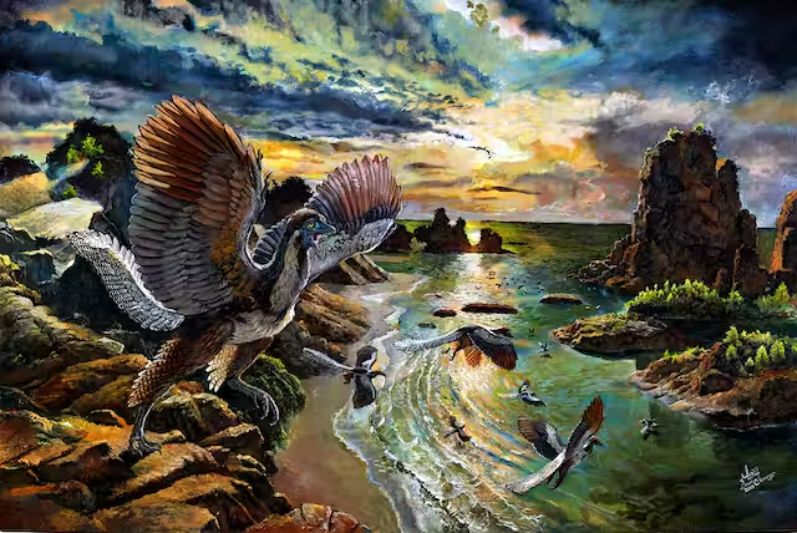
Scientists have discovered a dinosaur skeleton with intriguing bird-like characteristics among the preserved fossilised remnants of turtles and fish in a fossil bed in southeast China.
The discovery, which is thought to be around 30 million years older than any other known bird fossil, may provide some useful information on the crucial early stages of the evolution of birds.
To determine the animal’s position within the dino-bird family tree, palaeontologist Min Wang of the Chinese Academy of Sciences and colleagues compared the new fossil, called Fujianvenator prodigiosus, with the remains of dinosaurs from that period and more recent ones.
The scientists came to the conclusion that the pheasant-sized, possibly feathered Fujianvenator prodigiosus belonged to the same ancestry as contemporary birds and their most closely related dinosaur predecessors, the avialae family.
These early bird fossils are rare, therefore they individually contain crucial information on the evolution of birds and the environments they encountered on Earth.
To honour the tremendous diversity and distinctive composition discovered at that period and location in Earth’s history, researchers have called the collection Fujianvenator. It was discovered in Zhenghe Fauna.
For many years, a crucial early stage in the evolution of modern birds was defined by the well-preserved remains of a dinosaur called Archaeopteryx, which is 150 million years old.
Now, though, scientists aren’t so convinced, discovering that the fabled feathered species shares more traits with the Deinonychosauria than the Avialae. Researchers can only make educated guesses as to what such an early bird would have looked like because there aren’t many other compelling bird-like fossils from this era.
In between an ancient dinosaur and more contemporary birds, Fujianvenator appeared only a few million years after Archaeopteryx and may hold some of the answers.
The peculiar four-winged Anchiornis and other dinosaurs that resembled less birds have traits in common with the pelvis of Fujianvenator. This demonstrates that Fujianvenator diverged in a distinct direction from the one that produced birds and indicates that the morphological shift from arms to wings began very early in the evolution of birds.
The fossils it was discovered with and its lengthened lower hindlimbs show that Fujianvenator was either a long-legged swamp dweller or a fast runner.
These leg proportions are used for both running and wading, but sadly, Fujianvenator’s feet, which might discern between these alternatives, are not fully described, thus additional fossil finds will be required to confirm.
But this is the first instance of a possible swamp avian being found. All of the other avialans that have been found so far show characteristics of being tree dwellers.
May is Small Business Month, a time to honor and recognize the achievements of the… Read More
Swiss International University (SIU) is on track to be one of the world's most respected… Read More
In a session that left students buzzing with fresh ideas and practical insights, Invertis University… Read More
At the 21st Shanghai International Automobile Industry Exhibition, which is surging with the wave of… Read More
Liverpool, UK—House of Spells and Comic Con Liverpool are once again collaborating to bring the… Read More
Introduction In India's booming EdTech space, there's one name that's making waves among Telugu students… Read More